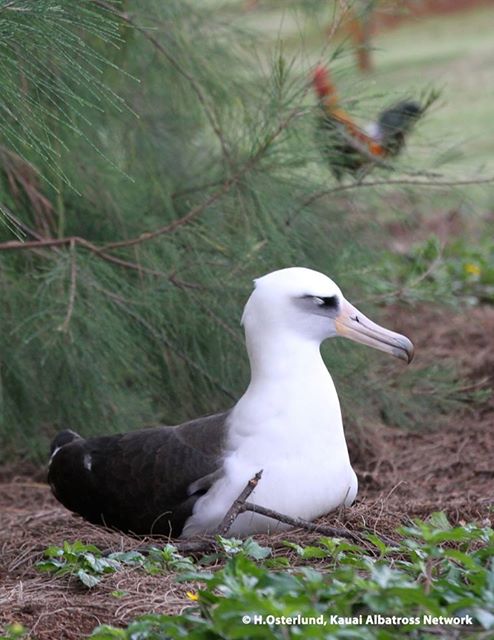Twenty-two Laysan Albatross Phoebastria immutabilis chicks have disappeared over the past three weeks from a wildlife refuge on the USA’s island of Kauai, with feral Domestic Cats Felis catus being suspected as the culprits (click here and here).

A Laysan Albatross incubates its egg on Kauai, photograph by Hob Osterlund
As a consequence traps have been set and so far eight cats have been caught. “We’ve noticed the mortality has subsided since we’ve removed eight cats,” said Michael Mitchell of the Kauai National Wildlife Refuge Complex. The complex includes the Kīlauea Point National Wildlife Refuge where 115 to 130 pairs of Laysan Albatrosses breed unprotected by a predator-proof fence that would keep out cats, as has proved successful at the Kaena Point Natural Area Reserve on the nearby island of Oahu (click here and here).

A live-trapped cat
As well as the suspected cats killing chicks, domestic dogs Canis familiaris running loose have from time to time killed numbers of adult Laysan Albatrosses on Kauai (click here).
Unlike some of the other main Hawaiian islands Kauai apparently does not have an established population of alien Small Indian Mongoose Herpestes javanicus, a known seabird predator, although two animals were live-trapped on the island in 2012 (click here).
To view photos and accounts of Laysan Albatrosses breeding on Kauai visit My Albatross Diary, the Kaua’i Albatross Network and The Albatross of Kaua’i. There's also a live-streaming webcam, in its second year, that is keeping watch on two Laysan nests, currently with small chicks (click here and here).
John Cooper, ACAP Information Officer, 21 February 2015

 English
English  Français
Français  Español
Español 


